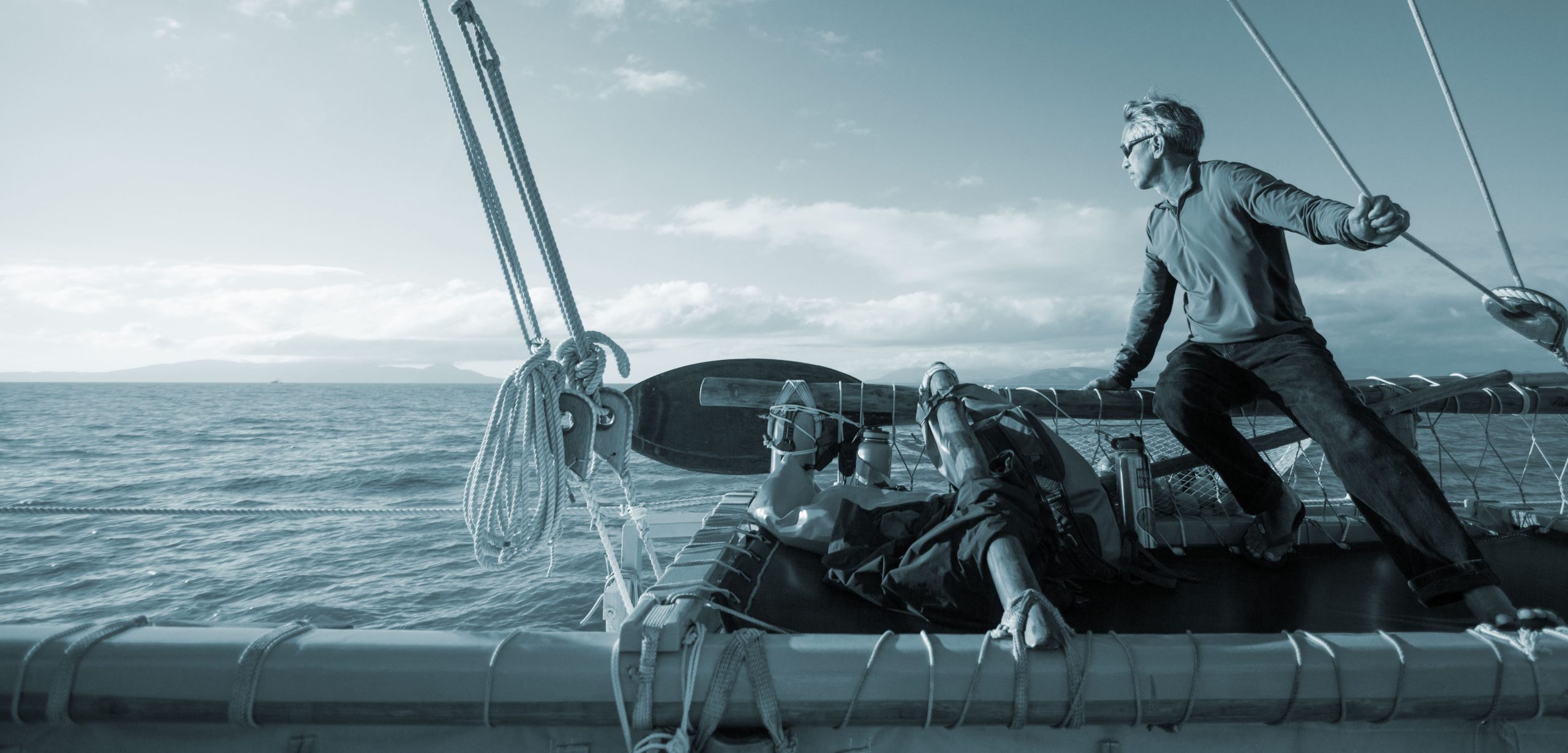Coastal Job: Traditional Ocean Navigator
How Nainoa Thompson learned to read the waves and tap into the magic of the Polynesian wayfinding tradition.
Article body copy
Some people work in cubicles, others work in kitchens, but the most intriguing workplace of all may be the coast. Meet the people who head to the ocean instead of the office in our Coastal Jobs series.
Nainoa Thompson is a Native Hawaiian master navigator for the Polynesian Voyaging Society, an organization that seeks to preserve traditional Polynesian wayfinding. He navigates the open ocean for weeks at a time without using any modern instruments. When the society embarked on a worldwide voyage from 2014 to 2017, Thompson navigated a third of the legs in a double-hulled voyaging canoe called Hōkūleʻa.
Growing up in Hawai‘i, I had no idea that I was a descendent of the greatest navigators of all time; nothing was taught in school about Hawaiian history or culture. That changed for me in 1974, while I was a paddler for a local canoe club.
By some miracle, the Hawaiian artist and historian Herb Kāne lived across the canal from where we launched our boats. Herb had rigged two fiberglass canoes together into a double hull, like a catamaran, and would come to the club to ask for volunteers to paddle him through the reef. Even though I was a novice, he invited me to dinner, and that’s when I learned about his dream to build the first deep-sea voyaging canoe in 600 years and sail it to the homeland of the Hawaiian people in the South Pacific near Tahiti. At that moment, I knew I wanted to follow this path to navigation.
A year later, I joined the Polynesian Voyaging Society, which Herb helped found. That led me to one of the last great navigators: Mau Piailug of Micronesia. By that time, Polynesian wayfinding had been forgotten everywhere except for a few pockets in Micronesia. During my first lesson with him, he said, “I’ll teach you how to get to Tahiti and to come home to Hawai‘i, but I’m not going to teach you the magic.” Mau stayed with me at my parents’ house and trained me every day for 28 months. I finally sailed to Tahiti in 1980. Mau was on board to make sure the crew and I didn’t make any big dumb mistakes. It took us 31 days.
Now, my open ocean voyages last an average of 25 days. I have a crew of about 13 people; their main job is to keep water out of the hulls, which aren’t watertight, and to keep the canoe from tipping in the wind. During a voyage, we’re up 21 to 22 hours a day. Most navigators sleep in 20-minute catnaps. Now that I’m older, I need an hour in the day to sleep.
Navigation is based on the stars, the sun, and the waves. Stars are consistent, but daylight often washes them out, or clouds obscure them. Sometimes the sun is too high or there’s no moon in the sky, so you can’t navigate by celestial bodies. You have to read the waves. You have to memorize everything—the shape and pattern of the sea—because you only know where you are by memorizing where you’ve come from.
On one journey, my crew and I were sailing to Madagascar en route to South Africa. The waves, however, became too dangerous for us to enter any harbor, so we had to stay out at sea. Then the winds built up a big wave, which crashed on top of us. All that water tore nearly five meters of security canvas, which covers the hulls where the crew sleeps. It took us all through the night to sew it by hand. We ended up turning northwest and emergency anchoring in Mozambique. We still haven’t made it to South Africa.
Even if I’m not successful in reaching the destination, I honor my teachers by trying. If nobody goes, it means the extinction of our heritage.
I have no idea who I’d be if hadn’t followed this path. When I’m at sea and something in nature unveils itself—and I feel that I can read a wave and recognize how much I’ve grown from all the journeys I’ve taken—that is my definition of magic.

